Some plants successfully hide until the time is right for them to attract pollinators. One of the best local peek-a-boos is Horsemint, Monarda punctata. It is just staring its prime blooming season. While you can find it booming other times of the year but August and September are its prime time. Horsemint likes sandy soil that dries out well. It’s easy to spot from the road. Any time you have high sandy banks on either side of the road that’s a prime location for Horsemint. Look for the showy pink bracts. And while it’s not a requirement I usually find Horsemint in a transition zone, usually between low grass and shrubs or trees. Besides having a very attractive aroma it also makes a relaxing tea. If you want to read more about Horsemint you can go here.
Wild Mushroom News: For those wanting to know more about fungi here in Florida — and by extension the Southeast — there will be three events this month:

Dr. Alija Mujic adds spice to some red chanterelles picked at the last FALAFEL fungi forage. Photo by Green Deane
Sept. 16th, Gainesville. The Florida Academic Lichen and Fungi Enthusiasts League will hold their monthly foray, at Kanapaha Botanical Gardens, Gainesville, 10 a.m. All experience levels are welcome; local experts will assist with identification. Cost of admission into the Gardens is $4 for adults and $2 for children ages 5-13. I attended their August foray and it was well worth the drive.
Sept. 23rd, Alan and Arleen Bessette, co-authors of many books on mushrooms — particularly the southeast — will be holding a class in Eustis. 9:30 a.m., Trout Lake Nature Center, 520 East County Road 44. There will be a brief class inside and then exploring the area for mushrooms. They will cover both common and uncommon mushrooms of Florida. This is an opportunity to meet two of the nation’s best-known authors on mushrooms. They have written many fields guides that are both regional and or species specific. I presume they will have some of their publications for sale.
Sept. 24th, Join the Orlando Mushroom Group’s inaugural fungal foray! We’ll be looking for and identifying local mushrooms. Where? Lower Wekiva River Preserve State Park, State Road 46 (west of Sanford across from the north end of Longwood Markham Road.) 9 a.m. Fee: $10 per adult. Rain or shine (except hurricanes.) Dress for bugs, walking and know rattle snakes are common in the area.
During our Gainesville foraging class we saw a flooded Black Gum tree which brings up this question: Do you know why the Sweet Gum tree is called that? Because while it tastes mighty bad it is not as bad as the other “gum” trees, one of which is fruiting, the Black Gum.You have to like sour and bitter to like the Black Gum tree. If you don’t the fruit is offensive and elicits comments that cannot be printed in wholesome publications. This did not stop settlers from adding a lot of sugar to the fruit and making jelly out of it. The seed itself is easy to identify in that under the pulp there are vertical striations covering the seed. The tree usually looks gangly and has branches that are often on a 90-degree angle to the trunk, which is a little unusual. To read more about the Black Gum and its nearly-offensive but edible relatives click here.
This is also a good time of year to start noticing sumac berries. The most common one locally and the one most found most widely dispersed throughout North America is the Winged Sumac, Rhus Copallina. Sumacs are fairly easy to identity because of their terminal cluster of garnet-colored berries. Acid on the berries can be used to make a lemonade then the dried berries can be ground up for a spice. A lot of folks are justly concerned about Poison Sumac. However, Poison Sumac has off-white to light green berries and they grow on stems near the main trunk of the shrub. Also you have to be in wet spots to find Poison Sumac and the leaves are a different shape. To read about the Sumacs go here.
There are foraging classes this weekend but one or both might have to be cancelled because of Hurricane Irma. We’ll just have to see what she does. If the storm stays south the Saturday’s Orlando class shouldn’t be a problem. The West Palm Beach class is questionable. I will let you know.
Saturday, September 9th, Blanchard Park, 10501 Jay Blanchard Trail, Orlando, FL 32817. 9 a.m.
Sunday, September 10th, Dreher Park, 1200 Southern Blvd., West Palm Beach, FL, 33405, 9 a.m.
Saturday, September 16th, Florida State College, south campus, 11901 Beach Blvd., Jacksonville, FL, 32246. 9 a.m.
Sunday, September 17th, John Chestnut County Park: 2200 East Lake Road, Palm Harbor, FL 34685. 9 a.m.
For more class information click here.
All of Green Deane’s videos available for free on You Tube. They do have ads on them so every time you watch a Green Deane video I get a quarter of one cent. Four views, one cent. Not exactly a large money-maker but it helps pays for this newsletter. If you want to see the videos without ads and some in slightly better quality you can order the DVD set. It is nine DVDs with 15 videos on each. Many people want their own copy of the videos or they have a slow service and its easier to order then to watch them on-line. They make a good gift for that forager you know. Individual DVDs can also be ordered. You can order them by clicking on the button on the top right of this page or you can go here.
Want to identify a plant? Looking for a foraging reference? Do you have a UFO, an Unidentified Flowering Object you want identified? On the Green Deane Forum we chat about foraging all year. And it’s not just about warm-weather plants or just North American flora. Many nations around the world share common weeds so there’s a lot to talk about. There’s also more than weeds. The reference section has information for foraging around the world. There are also articles on food preservation, and forgotten skills from making bows to fermenting food. One special section is “From the Frightening Mail Bag” where we learn from people’s mistakes. You can join the forum by clicking on the button on the upper right hand side of this page.
This is issue 272.
If you would like to donate to Eat The Weeds please click here.

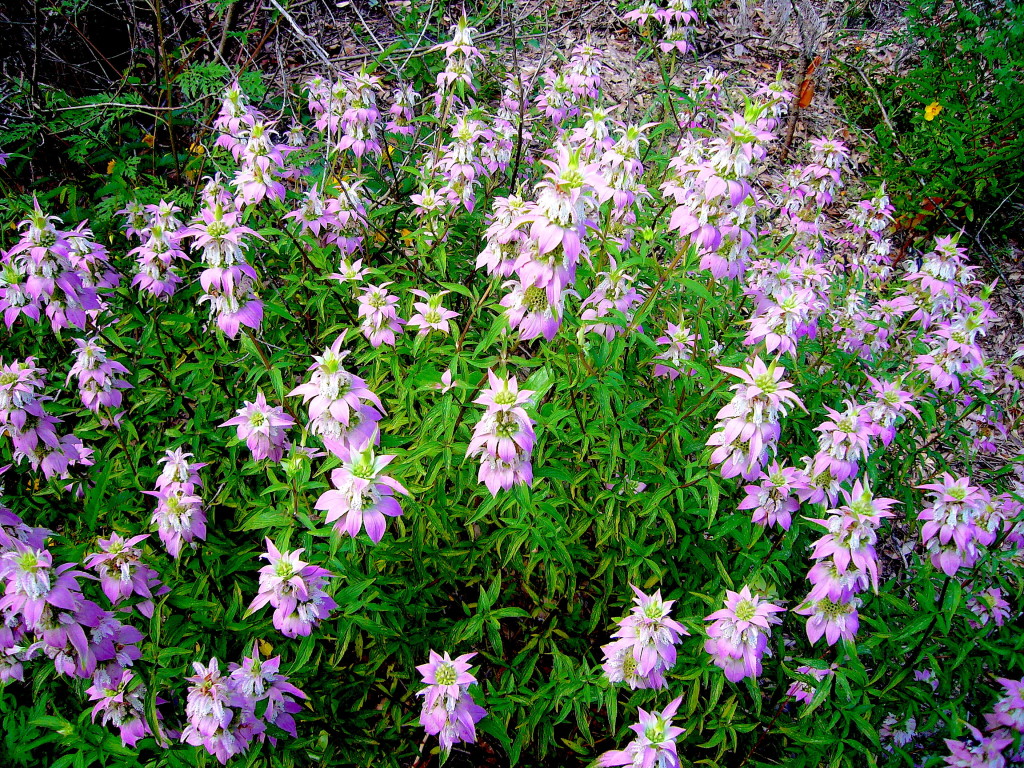
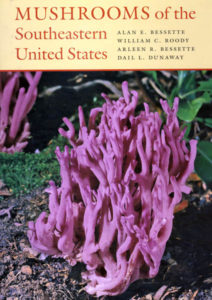
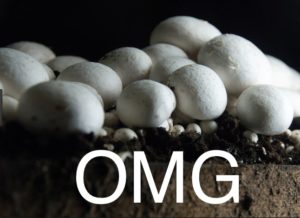


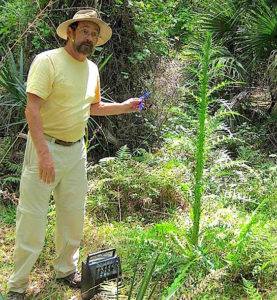
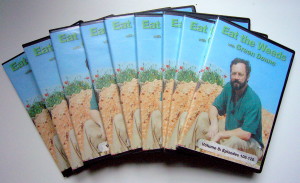


Hey Deane,
I discovered that I have Chanterelles growing on my property. After itemizing, (because that’s what we do at “eat the weeds”), I hurried into the kitchen and cooked them up. Yummy !!!
The next day I went back out foraging and only found two small Chanterelles, so I decided to break them up and throw them under several different Oaks in my yard.
My question is: Am I doing the right thing by spreading the pieces around my yard to help spread the spores ? or, Am I just being a dumb ass and wasting good food?
Bob Franz, Dunnellon, Fl.